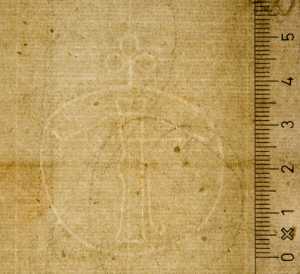Specifications
| Title | Composition Study for 'The Miracle of the Madonna of the Snow' |
|---|---|
| Material and technique | Black chalk, pen and brown ink |
| Object type |
Drawing
> Two-dimensional object
> Art object
|
| Location | This object is in storage |
| Dimensions |
Height 308 mm Width 205 mm |
|---|---|
| Artists |
Draughtsman:
Alessandro Maganza
Previously attributed: El Greco |
| Accession number | S 18 (PK) |
| Credits | Loan Stichting Museum Boijmans Van Beuningen (former Koenigs collection), 1940 |
| Department | Drawings & Prints |
| Acquisition date | 1940 |
| Creation date | in circa 1580-1590 |
| Watermark | Crossbow surmounted by a trefoil (49x 42 mm, on P6 of 8P, vH, right of the center, upside-down), similar to Briquet 763 (Ferrara 1597) and 766 (Ferrara 1583), but without the countermark, and somewhat similar to Piccard Online AT3800-PO-123861 (Rovereto 1625), but without te countermark. [see image] |
| Inscriptions | none |
| Collector | Collector / Franz Koenigs |
| Mark | F.W. Koenigs (L.1023a on removed mount) |
| Provenance | Sir Archibald Alison (1792-1867), Glasgow (in an album); Art dealer Luigi Grassi (1858-1937, L.1171b), Florence (from the album, probably dismembered by him); Franz W. Koenigs (1881-1941, L.1023a), Haarlem, acquired in 1930 (attributed to El Greco); D.G. van Beuningen (1877-1955), Rotterdam, acquired with the Koenigs Collection in 1940 and donated to Stichting Museum Boijmans Van Beuningen |
| Research |
Show research Italian Drawings 1400-1600 |
| Literature | Tietze/Tietze-Conrat 1944, pp. 27, 292, under no. A 1754 and A 1757 (mid 17th-c.); Wethey 1962, p. 153 (Venetian Mannerist); Byam Shaw 1976, under no. 840; Byam Shaw 1983, under no. 252; Paris 1996, under no. 61; Matarrese 2002, pp. 62, 77, 89, fig. 36 |
| Material | |
| Object | |
| Geographical origin | Italy > Southern Europe > Europe |
| Place of manufacture | Vicenza > Veneto region > Italy > Southern Europe > Europe |
Do you have corrections or additional information about this work? Please, send us a message
























